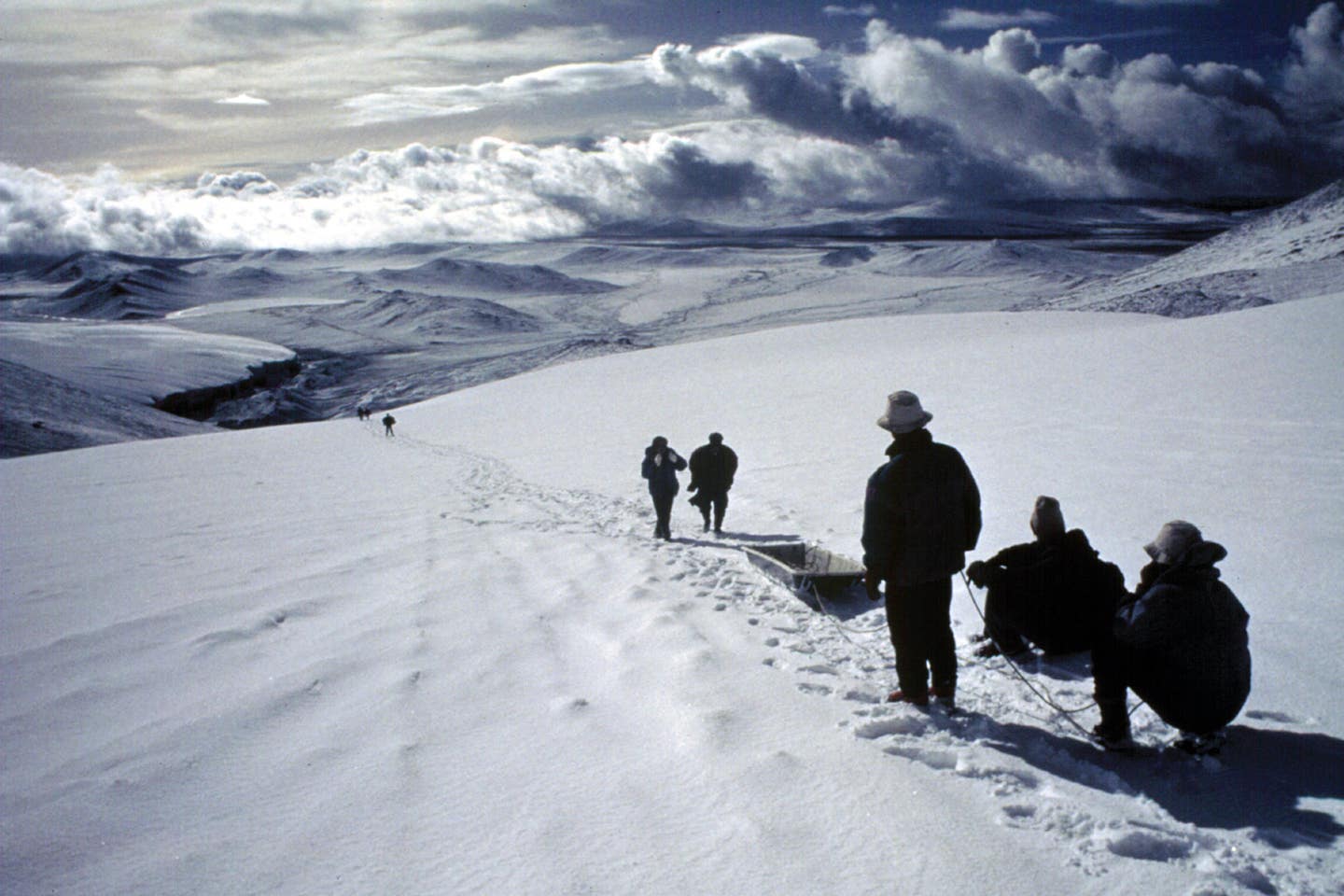1,700 previously unknown viruses found preserved in glacial ice
Ancient viruses preserved in glacial ice provide insights into Earth’s climate history and reveal potential links between viruses and climate change.

Viruses preserved in glacial ice offer valuable insights into Earth’s climate shifts. (CREDIT: OSU)
A recent study suggests that ancient viruses preserved in glacial ice hold valuable clues about Earth’s climate history. Researchers analyzed ice core samples from the Guliya Glacier, located high on the Tibetan Plateau, and identified nearly 1,700 viral species, three-fourths of which were previously unknown.
These ancient viruses provide insight into how microorganisms adapted to climate shifts over the last 41,000 years, including the transition from the Last Glacial Stage to the warmer Holocene period.
The Guliya Glacier, positioned over 20,000 feet above sea level, is a treasure trove for scientists studying long-term climate patterns. By drilling into prehistoric ice, researchers have reconstructed virus DNA that was frozen in time, offering a glimpse into microbial life during previous climate cycles.
However, these ancient viruses don’t pose a threat to human health, as they likely infected dominant microbes, not animals or humans. Instead, these viruses appear to have played a significant role in helping their hosts survive in extreme conditions.
"Before this work, how viruses linked to large-scale changes in Earth’s climate remained largely uninvestigated," said ZhiPing Zhong, the study’s lead author and a research associate at the Byrd Polar and Climate Research Center at Ohio State University. The study, published in Nature Geoscience, opens new avenues of understanding about the intricate relationship between microorganisms and climate shifts.
Related Stories
The team’s findings are particularly timely as global warming accelerates glacier melt, potentially erasing valuable archives like the Guliya Glacier forever. The ice layers analyzed in this study preserved detailed snapshots of how viruses reacted to climate fluctuations during three major cold-to-warm periods. The most distinct viral community the researchers identified is believed to date back 11,500 years, during a period of significant climate transition.
Zhong cautioned that it's still too early to say for certain whether viruses played a direct role in these climate changes, but the evidence points to an intriguing possibility. "This at least indicates the potential connection between viruses and climate change," he explained. The viruses found in the glacier were mostly unique to Guliya, but about one-fourth overlapped with known species from other parts of the world, suggesting that some were transported from regions as far away as the Middle East or the Arctic.
Understanding how viruses evolved during past climatic events may help researchers predict how modern viruses could respond to ongoing environmental changes.
According to the study, ancient viral DNA holds the potential to unlock many new questions and answers, especially in the context of today’s rapidly warming planet. “To me, this science is a new tool that can answer basic climate questions that we couldn’t have answered otherwise,” said Lonnie Thompson, co-author of the study and an earth sciences professor at Ohio State.
The study’s interdisciplinary approach has been key to its success. Combining expertise from microbiology, climate science, and advanced sequencing technology has allowed the team to uncover a rich archive of viral history. As Matthew Sullivan, another co-author and professor of microbiology and environmental engineering at Ohio State, put it, "This kind of opportunity represents several disciplines coming together, each with their own scientific languages as a barrier to proceed."
By sharpening techniques to study ancient viruses on Earth, scientists are also gaining tools that could be applied to the search for life beyond our planet. According to Thompson, the methods used to explore glacial ice for microbial life may one day help researchers find life in extraterrestrial environments, such as the ice fields on Mars or beneath the icy surfaces of moons like Europa.
The potential to explore Earth’s viral past also highlights the importance of acting quickly before global warming compromises the preservation of ancient ice cores. The rapid retreat of glaciers like Guliya emphasizes the urgency for scientists to gather and study these precious samples before they vanish. “I’m optimistic about what can be done here, because if we work together, these techniques have much potential to help us start tackling a large array of scientific issues,” Thompson said.
Advances in technology and novel scientific approaches will play a critical role in further investigations, the study noted. While significant progress has been made in understanding the role of viruses in past climate conditions, much work remains to be done.
The study was supported by the National Science Foundation, the Chinese Academy of Sciences, and other organizations, reflecting the broad international collaboration required to tackle such a complex subject.
As technology continues to improve, researchers are hopeful that future studies will reveal even more about the relationship between viruses, microorganisms, and climate change. Uncovering how these ancient viruses interacted with their environment may offer critical insights into how modern ecosystems will respond to the ongoing climate crisis.
The race to preserve and study the world’s remaining glacial ice is on, and every new discovery brings us closer to understanding the past—and preparing for the future.
Note: Materials provided above by The Brighter Side of News. Content may be edited for style and length.
Like these kind of feel good stories? Get The Brighter Side of News' newsletter.



